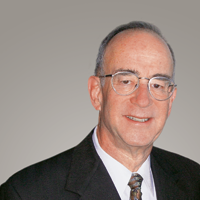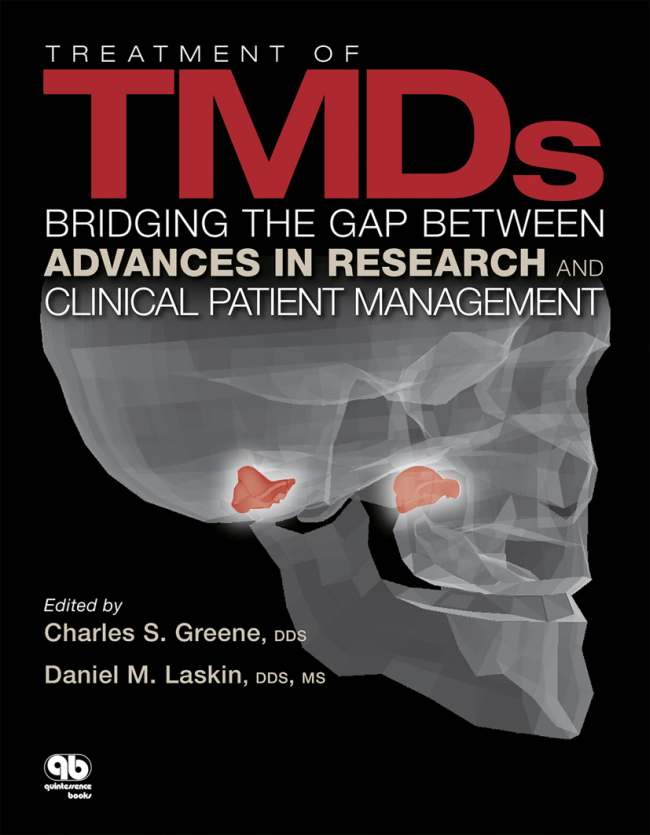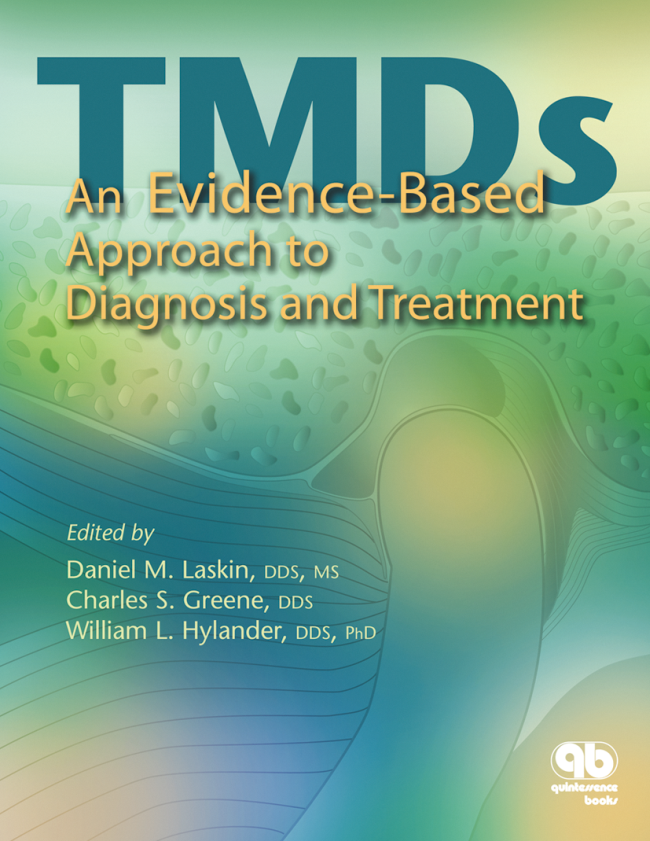Journal of Craniomandibular Function, 2/2024
Reply to letter to the editorPages 180-184, Language: English, GermanTürp, Jens C. / Greene, Charles S.Journal of Craniomandibular Function, 1/2024
Open AccessPages 81-84, Language: English, GermanGreene, Charles S. / Türp, Jens C.Journal of Craniomandibular Function, 1/2024
Open AccessPages 87-91, Language: English, GermanTürp, Jens C. / Greene, Charles S.Journal of Craniomandibular Function, 4/2023
Pages 354-360, Language: English, GermanTürp, Jens C. / Greene, Charles S.Quintessence International, 4/2023
DOI: 10.3290/j.qi.b3999673, PubMed ID (PMID): 37039380Pages 328-334, Language: EnglishKlasser, Gary D. / Abt, Elliot / Weyant, Robert J. / Greene, Charles S.Temporomandibular disorders (TMDs) encompass a number of different musculoskeletal disorders often accompanied by pain and dysfunction. Most TMDs are acute, but can become chronic leading to disability and quality of life issues. There is wide variation in treatment of TMDs, including both conservative/reversible therapies as well as invasive/irreversible treatments, which present difficulties for clinicians, patients, and third-party payers as to what constitutes appropriate care. Data sources: A recent report by the National Academies of Sciences, Engineering, and Medicine highlighted a number of deficiencies, most notably in the education of TMDs within United States of America dental schools at both the predoctoral and postdoctoral (dental) levels as well as addressing the historic inconsistencies in both diagnosis and treatment. New areas for research and interprofessional collaboration should assist in the understanding of TMDs, and updated clinical practice guidelines should help reduce variation in the delivery of evidence-based care. Recently, the American Dental Association recognized orofacial pain as a specialty, which should increase the level and availability of expertise in treating these issues. Summary: Based on the current best evidence, this report is an attempt to alert the profession to discontinue irreversible and invasive therapies for the vast majority of TMDs and recognize that the majority of these disorders are amenable to conservative, reversible interventions.
Keywords: American Dental Association, Commission on Dental Accreditation, dental education and research, National Academies of Sciences, Engineering, and Medicine, temporomandibular disorders
Journal of Craniomandibular Function, 2/2023
Open AccessSciencePages 119-127, Language: English, GermanTürp, Jens C. / Greene, Charles S.A recent analysis of dental websites in Germany has shown that the so-called phase 1 / phase 2 concept for the therapy of patients with temporomandibular disorders (TMDs), which dates back to the 1970s, remains relatively widespread. At the same time, summary critical reviews of this therapeutic strategy are scarce and widely scattered in the dental literature. This can be disadvantageous for readers who want to know what the current expert opinions are in regard to this topic. In addition, it creates problems in the preparation of expert reports that may be required for insurance reviews or for various medicolegal situations. In this article, a brief description of this therapeutic concept is followed by a critical evaluation of it. It becomes clear that this clinical approach lacks scientific support and that its continued implementation is fraught with ethical concerns. Finally, two explanations are presented as to why the two-phase concept is still offered by some dentists.
Keywords: temporomandibular joint disorders, mandible, oral splints, malocclusion, prosthodontics, orthodontics, overtreatment, economic factors, dental ethics, evidence-based dentistry
Quintessence International, 8/2021
DOI: 10.3290/j.qi.b1782267, PubMed ID (PMID): 34282873Pages 657-658, Language: EnglishGreene, Charles S. / Ohrbach, RichardJournal of Craniomandibular Function, 3/2021
Book ReviewPages 249-254, Language: English, GermanTürp, Jens Christoph / Greene, Charles S. / Kusiak, John W. / Cowley, Terrie / Cowley Jr, Allen W.Journal of Oral & Facial Pain and Headache, 3/2021
DOI: 10.11607/ofph.2021.3.announcementPages 171-172, Language: EnglishGreene, Charles S. / Kusiak, John W. / Cowley, Terrie / Cowley Jr, Allen W.NASEM AnnouncementJournal of Oral & Facial Pain and Headache, 3/2020
Pages 206-216, Language: EnglishGreene, Charles S. / Manfredini, DanieleWithin the orofacial pain discipline, the most common group of afflictions is temporomandibular disorders (TMD). The pathologic and functional disorders included in this condition closely resemble those that are seen in the orthopedic medicine branch of the medical profession, so it would be expected that the same principles of orthopedic diagnosis and treatment are applied. Traditional orthopedic therapy relies on a "Two Pathway" approach involving conservative and/or surgical treatments. However, over the course of the 20th century, some members of the dental community have created another way of approaching these disorders— referred to in this paper as the "Third Pathway"—based on the assumption that signs and symptoms of TMD are due to a "bad" relationship between the mandible and skull, leading to a variety of irreversible occlusal or surgical corrective treatments. Since no other human joint is discussed in these terms within the orthopedic medicine communities, it has become progressively clear that the Third Pathway is a unique and artificial conceptual creation of the dental profession. However, many clinical studies have utilized the medically oriented conservative/ surgical Two-Pathway model to diagnose and treat TMD within a biopsychosocial model of pain. These studies have shown that TMD comprise another domain of orthopedic illness that requires a medically oriented approach for good outcomes while avoiding the irreversible aspects of the Third Pathway. This review presents historical and current evidence that the Third Pathway is an example of unorthodox medicine that leads to unnecessary overtreatment and further proposes that it is time to abandon this approach as we move forward in the TMD field.
Keywords: dental occlusion, jaw repositioning, orthopedics, temporomandibular disorders, TMD





